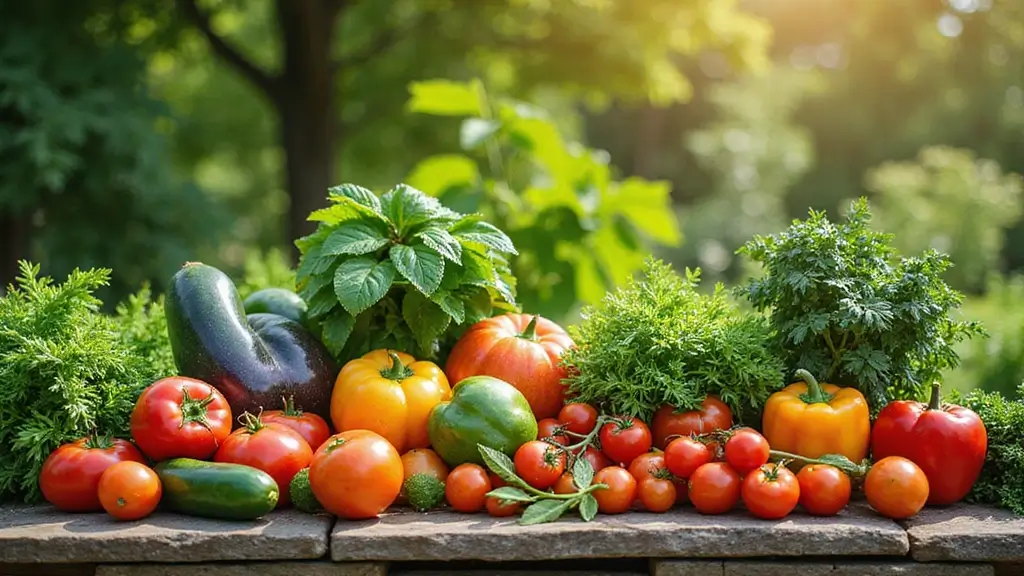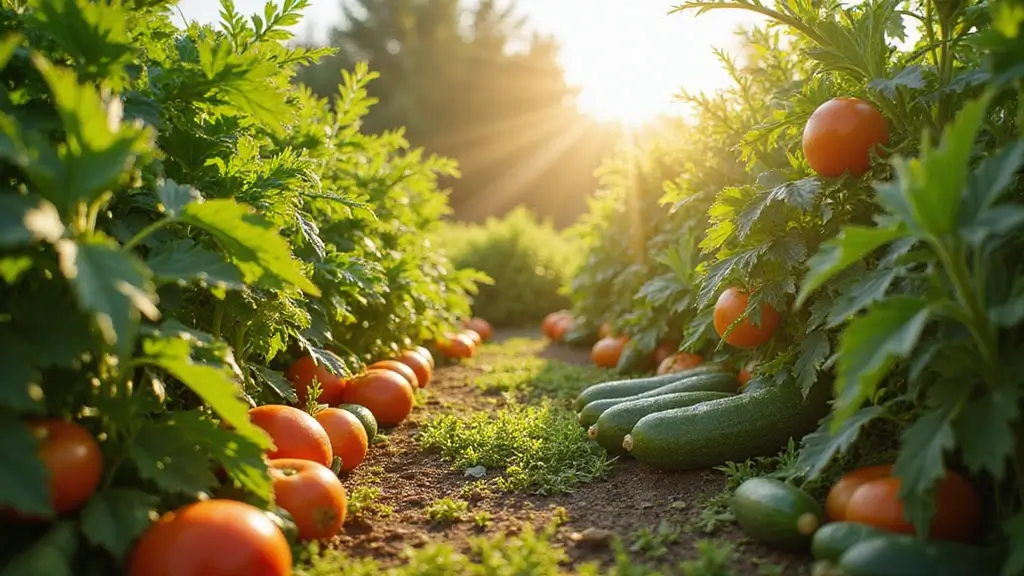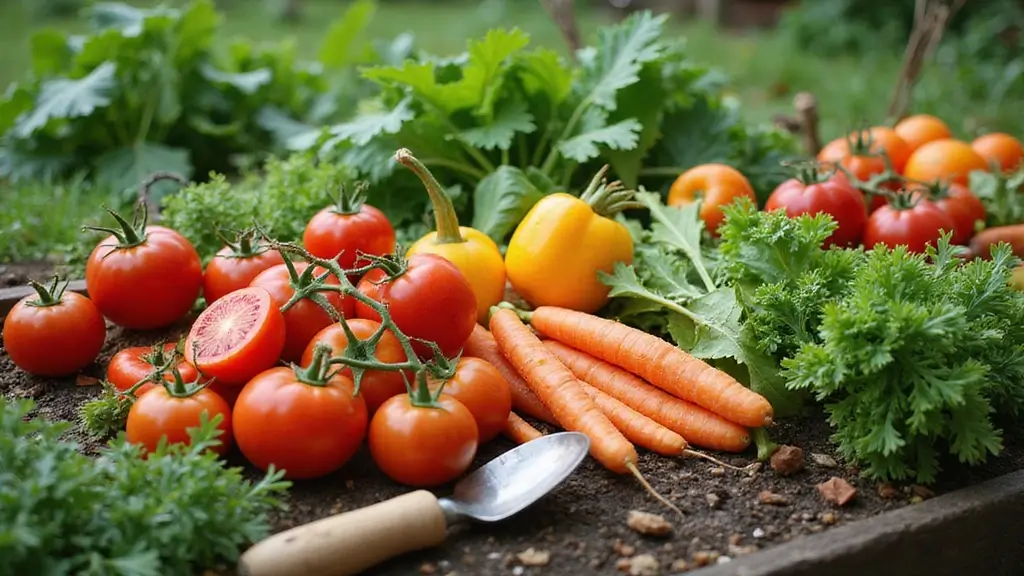10 Easy Vegetable Gardening Hacks for the Perfect Homegrown Harvest (You Won’t Believe #5!)
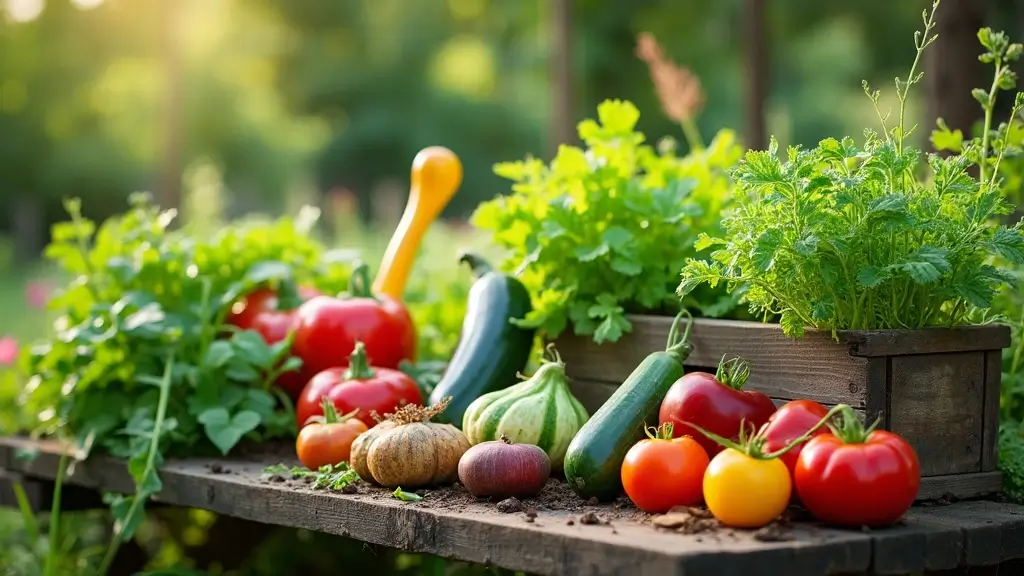
Vegetable gardening can feel overwhelming, especially for beginners. But with a sprinkle of creativity and some clever tricks, you can turn your small garden patch into a vibrant veggie haven. These hacks not only save time and effort but also enhance your harvest in ways you may not have imagined.
Get ready to roll up your sleeves and enjoy the rewarding experience of growing your own food. From simple repurposing ideas to innovative planting techniques, these tips will help you nurture your garden into a bountiful source of fresh produce. Prepare for a delightful journey towards the perfect homegrown veggies!
Let’s dive into these ten game-changing hacks that will transform your gardening experience and bring joy to your table.
1. Use Eggshells for Nutrients
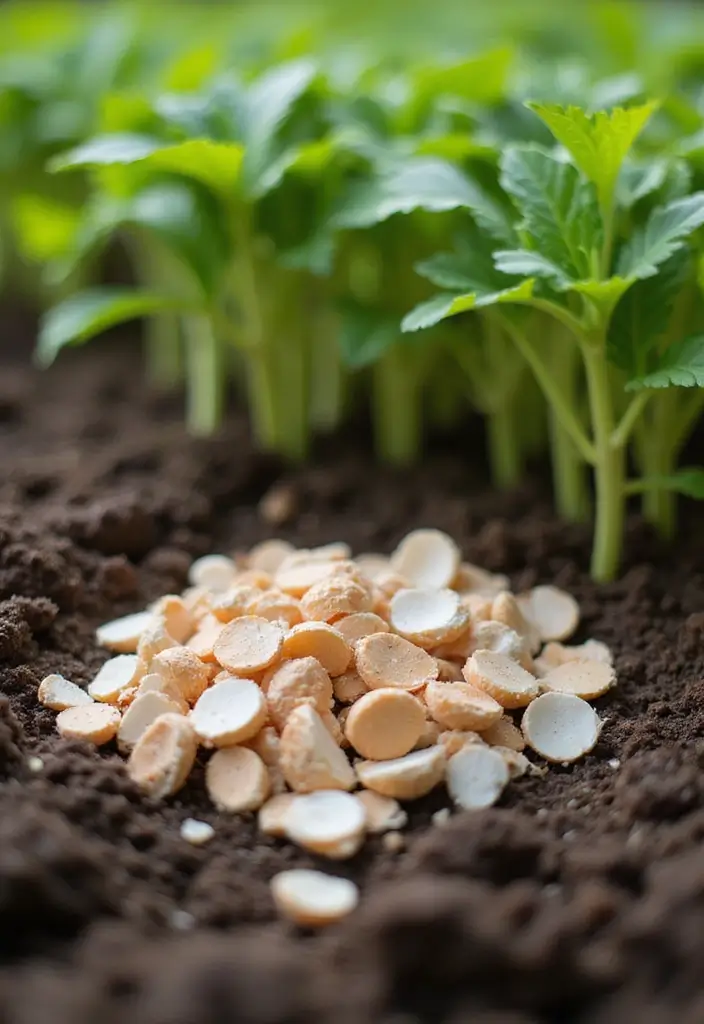
Did you know that the humble eggshell can be a powerhouse of nutrients? When crushed and added to your soil, eggshells provide a natural source of calcium, which helps prevent blossom end rot in tomatoes and peppers.
Simply rinse your used eggshells, let them dry, and then crush them into small pieces before mixing them into the soil. This easy tip not only enriches your garden but also recycles waste from your kitchen, supporting sustainability while nurturing your plants.
To enhance this process, consider using organic eggshell fertilizer. This product offers a concentrated source of calcium, magnesium, and phosphorus specifically designed for indoor and outdoor plants. Just add a handful to each planting hole or mix it with your compost for a nutrient-rich amendment.
For those who like to save their eggshells over time, a compost bin like the FCMP Outdoor IM4000 allows you to accumulate organic waste efficiently. This Canadian-made composter is perfect for turning kitchen scraps, including eggshells, into rich compost that will enhance your garden soil even further.
This simple hack will not only benefit your plants but also contribute to a healthier garden ecosystem.
2. Companion Planting for Natural Pest Control
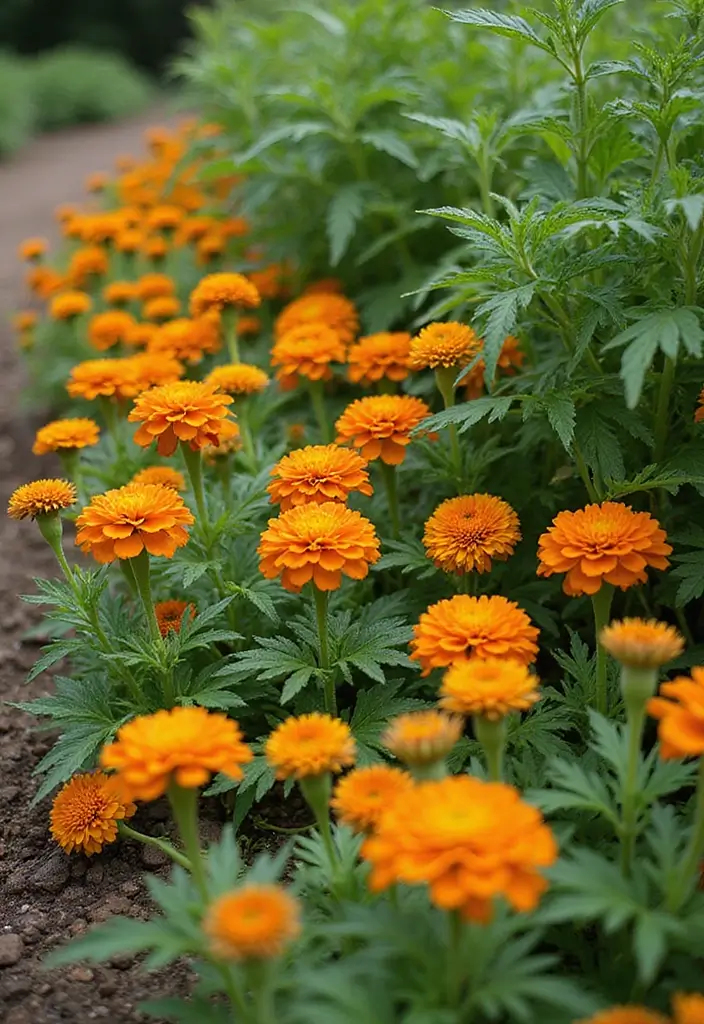
Companion planting is an age-old technique that takes advantage of the natural relationships between different plants. By planting certain vegetables together, you can deter pests and even enhance growth!
For example, planting marigolds alongside your tomatoes can help ward off nematodes, while basil can boost the flavor of tomatoes and repel aphids. To help you get started with this effective gardening strategy, consider using a companion planting guide book, which offers comprehensive information on which plants thrive well together and why.
In addition to pairing plants effectively, keeping pests at bay is crucial for a successful harvest. You might want to try an organic pest control spray, such as Mighty Mint, which is made from peppermint oil and can naturally repel a variety of common garden pests like spiders and ants.
As you plan your garden, creating a strategic layout can help you maximize the benefits of companion planting. To visualize the perfect plant combinations, check out the garden planting layout planner. This toolkit provides profiles of popular plants and reusable cling stickers, making it easy to design your garden for optimal growth and pest management.
Embrace the natural alliance of plants; it’s a sustainable approach that pays off with delicious homegrown veggies. Keep a close eye on how they interact and adjust your planting strategies accordingly, and you’ll be well on your way to a thriving garden!
3. DIY Plant Labels from Recycled Materials
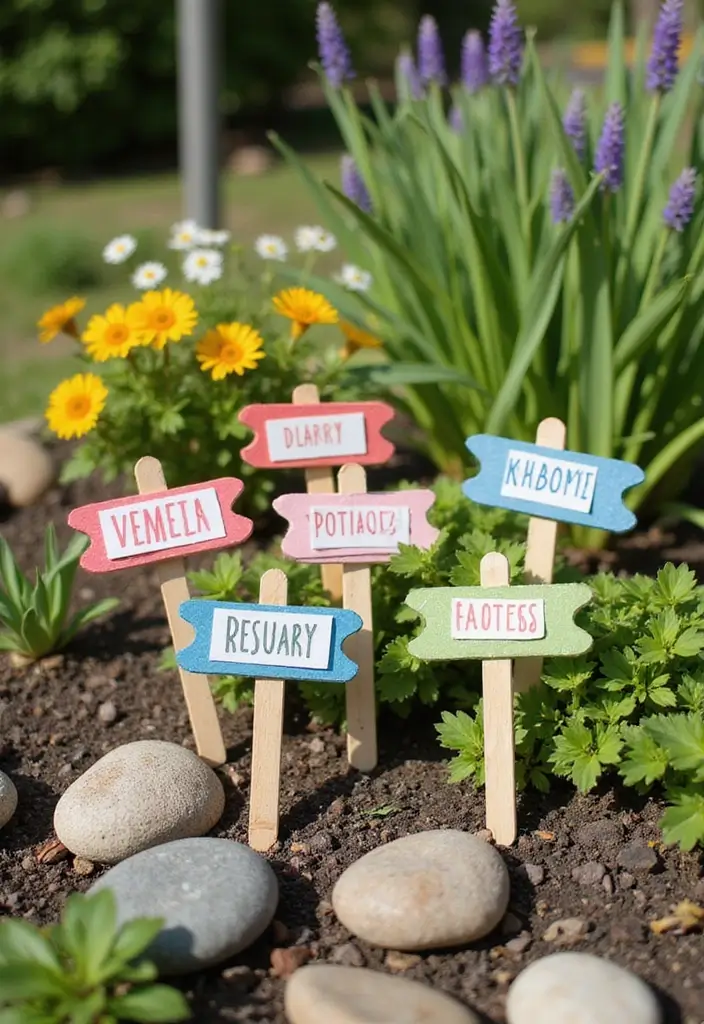
Keeping track of what you’ve planted can be a challenge, especially in a busy garden. Instead of buying expensive plant labels, why not create your own using recycled materials?
Old wooden spoons, popsicle sticks, or even stones can be easily transformed into charming plant markers. Just write the plant name on the surface, and you’ll have a rustic, eco-friendly way to organize your garden! For durability, consider using sharpie permanent markers to ensure the names stay visible throughout the growing season.
You can also add a personal touch by decorating your markers with washi tape—this set comes with assorted sizes and floral designs, making it fun and creative.
If you prefer a more polished look, you might want to invest in some ready-made wood plant labels. These wooden markers come with a built-in marker for easy writing, saving you time and effort.
Make it a fun family project and get everyone involved in the garden! This hack is not only cost-effective but also a great way to add some personality to your garden space.
4. Save Water with a Simple Drip Irrigation System
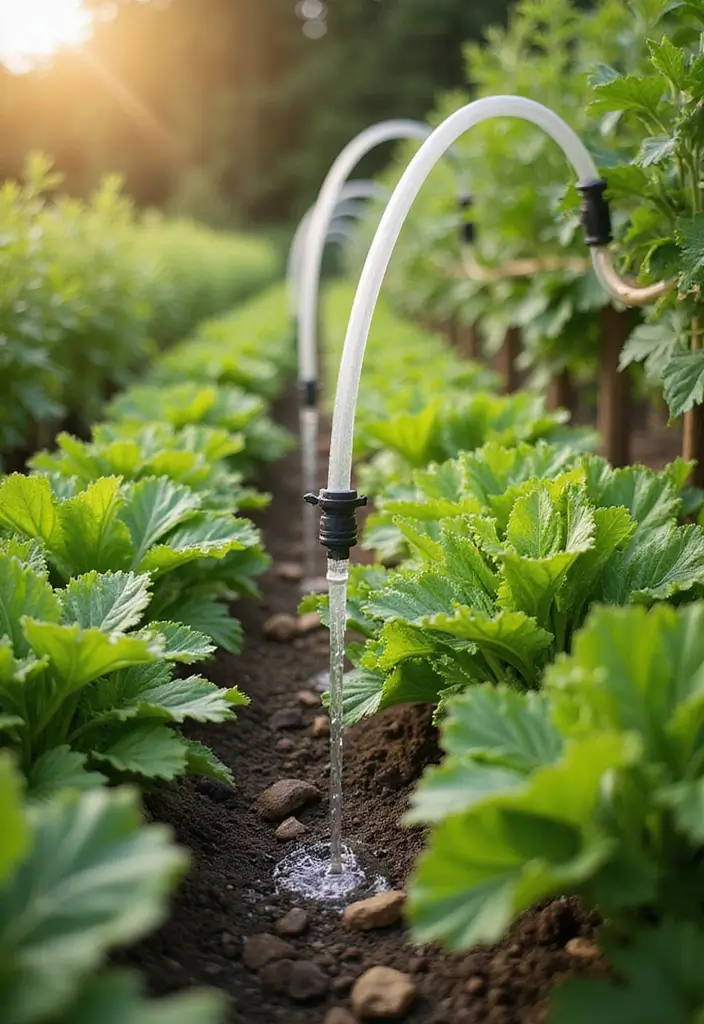
Watering your garden doesn’t have to be a chore. A DIY drip irrigation system can save you time and ensure your plants get the moisture they need right at their roots, effectively reducing water waste.
Using inexpensive materials like plastic tubing for irrigation, you can create a network that delivers water directly where it’s needed. Lay the tubing out in your garden to ensure each plant gets a steady supply of water without overwatering the surrounding areas.
To enhance your irrigation setup, consider adding a garden hose timer to schedule watering, especially during peak heat. This will help automate your watering routine, giving you peace of mind and freeing up time for other gardening tasks. Regularly check for leaks to maintain efficiency, and you can also use this system for potted plants for added convenience.
For any repairs or expansions needed in your system, the drip irrigation kit is a great solution. This hack not only promotes healthier plants but also conserves precious water resources, making your gardening efforts more sustainable.
5. Use Coffee Grounds as Fertilizer – You Won’t Believe This!
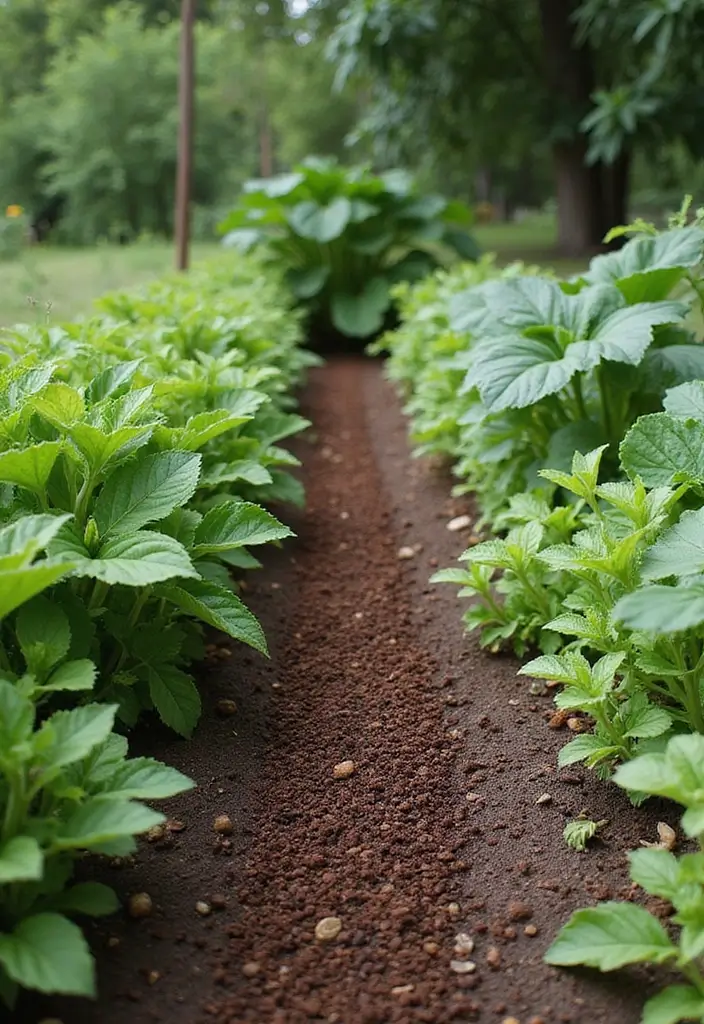
Coffee lovers, rejoice! Those used coffee grounds you usually throw out can be a goldmine for your garden. Not only do coffee grounds provide essential nitrogen, which helps promote vigorous growth, but they also improve soil texture.
Sprinkle your used grounds around your plants or mix them into your compost. If you’re starting a composting habit, the compost bin for kitchen waste can be a perfect addition to your kitchen, making it easy to collect organic materials, including coffee grounds. This not only helps with recycling waste but also allows you to combine them with other organic materials for a balanced compost.
Using coffee grounds will attract beneficial earthworms while deterring pests like slugs. To create an ideal environment for these helpful creatures, consider setting up an earthworm habitat kit in your yard. This kit makes it simple to cultivate earthworms that will naturally aerate the soil and enrich it further.
Just make sure the grounds are used and not fresh, as fresh coffee grounds can be too acidic. Watch for changes in plant growth and adjust your application amount accordingly. This hack is a fantastic way to recycle waste while giving your plants the nutrients they crave!
You might also like
6. Grow Vertical with Trellises
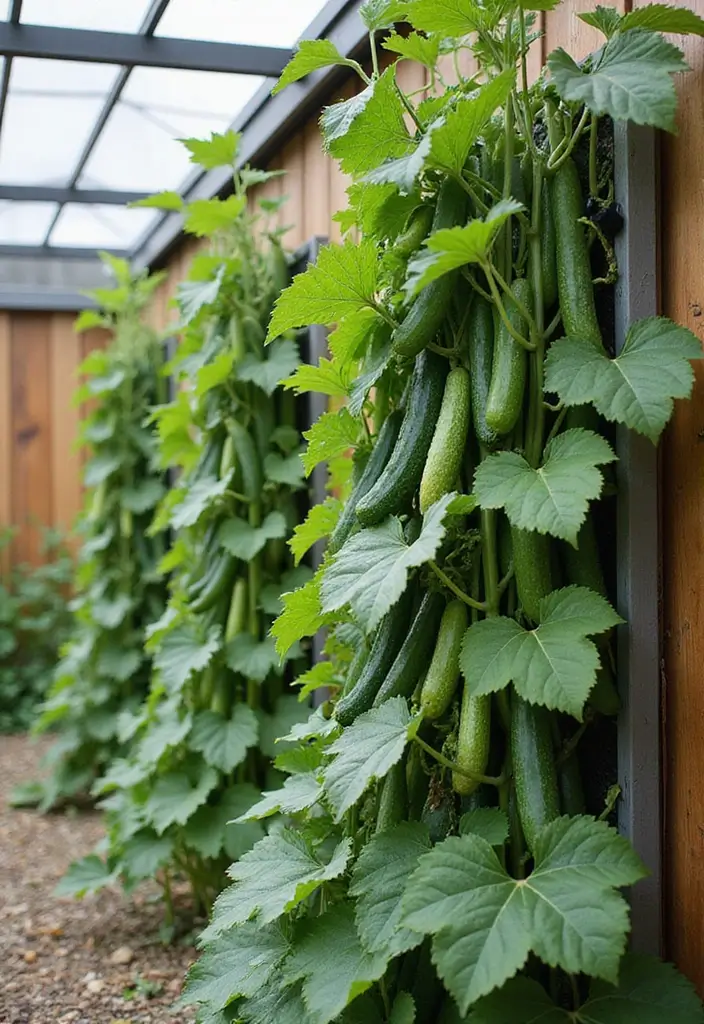
If you’re short on space, growing vegetables vertically is the perfect solution! With trellises, you can maximize your garden area while making harvesting easier. Beans, cucumbers, and peas are just a few plants that thrive when given a vertical space to climb.
Creating a trellis can be as simple as using wooden stakes and twine or repurposing old ladders for a quirky, rustic touch. For a more structured approach, consider adding a garden trellis, which is not only functional but also adds aesthetic appeal to your gardening space. This particular trellis is great for climbing plants and can be easily assembled to fit your needs.
Additionally, if you want to support your plants as they grow, using plant support stakes is an excellent choice. These stakes are adjustable, ranging from 17.9 inches to 42.3 inches, making them versatile for various plants like tomatoes and vines.
Not only does vertical gardening save space, but it also improves air circulation, reducing the risk of disease. To further enhance your trellis system, you might want to use climbing plant netting. This heavy-duty netting is perfect for supporting climbing plants, allowing them to flourish and providing a sturdy structure for growth.
– Choose materials that will support the weight of your plants.
– Ensure adequate sunlight reaches your climbing veggies.
– Consider interplanting with lower-growing crops to further maximize space.
This hack opens up new possibilities in small gardens and provides a stunning visual element to your veggie patch.
Trellising isn’t just about saving space; it’s about creating a flourishing vertical garden! Elevate your veggies and enjoy easier harvesting while improving air flow. Your garden will thrive, and so will you!
7. Use Newspaper for Weed Control
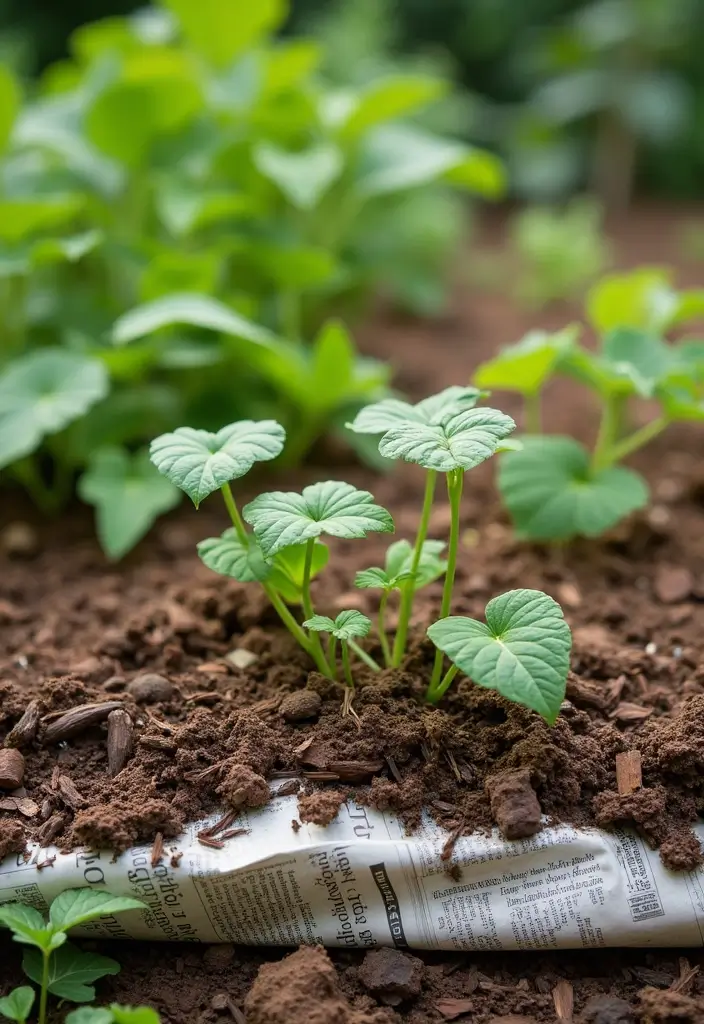
Weeds can be a gardener’s worst enemy, often stealing water and nutrients from your precious plants. A simple and effective way to keep them at bay is by using newspaper, specifically non-glossy newspaper. Lay down several layers of damp newspapers around your plants, covering them with mulch. This barrier blocks sunlight, preventing weeds from sprouting while retaining moisture in the soil. It’s cheap, eco-friendly, and effective!
For a perfect finish, consider using organic mulch. This premium mulch not only helps suppress weeds but also enriches the soil as it breaks down, providing essential nutrients to your plants.
– Make sure to use non-glossy newspapers to avoid chemicals leaching into the soil.
– Replace the newspaper as it breaks down to keep the layer fresh.
– Monitor for any weeds that might manage to break through and remove them promptly.
This hack is a fantastic way to keep your garden looking neat and tidy while reducing weeding time significantly!
Weeds may be small, but their impact on your garden is massive! Lay down newspaper and mulch for a natural, eco-friendly barrier that keeps your vegetable garden thriving.
8. Create a Compost Bin from Pallets
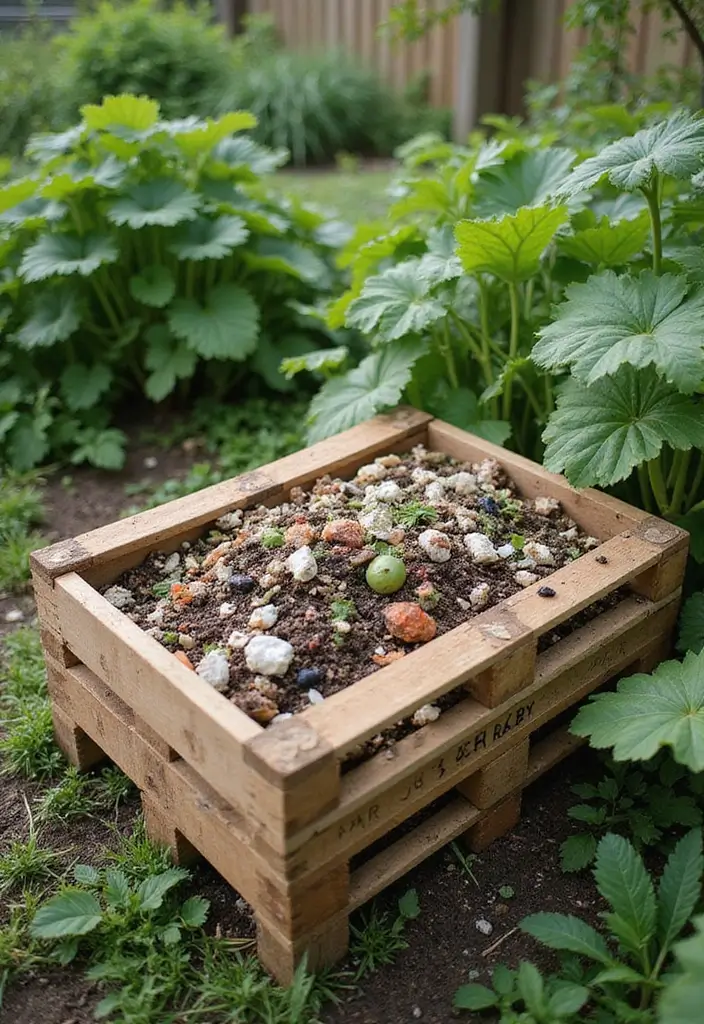
### 8. Create a Compost Bin from Pallets
Composting is an excellent way to reduce kitchen waste and create nutrient-rich soil for your garden. Building a compost bin from wooden pallets is both cost-effective and simple!
All you need are four pallets to create a sturdy, open-sided bin where you can layer organic waste and watch it transform into black gold. To make the process even easier, consider using an OXO Good Grips EASY-CLEAN COMPOST BIN for your kitchen scraps. This compact compost bin is perfect for collecting waste while keeping your kitchen tidy until you’re ready to add it to your pallet bin.
Make sure to turn the compost regularly to aerate it and speed up decomposition. A reliable pitchfork can be your best friend in this process, as it helps you mix the materials effectively. The sturdy fiberglass handle and five tines make it easy to aerate the pile and ensure proper decomposition.
When composting, keep a balance of green materials (fruits and veggies) and brown materials (dry leaves and cardboard). Maintaining moisture is crucial, but be careful not to make it too soggy. You can use a garden shovel to help add or remove materials, ensuring that your compost stays just the right consistency.
By using this hack, you’ll not only clean up your kitchen but also nourish your plants with rich compost!
Turn kitchen scraps into black gold! A simple pallet compost bin not only reduces waste but enriches your garden soil for a bountiful harvest. Who knew sustainability could be so easy?
You Might Also Like
9. Use Old T-Shirts as Plant Ties
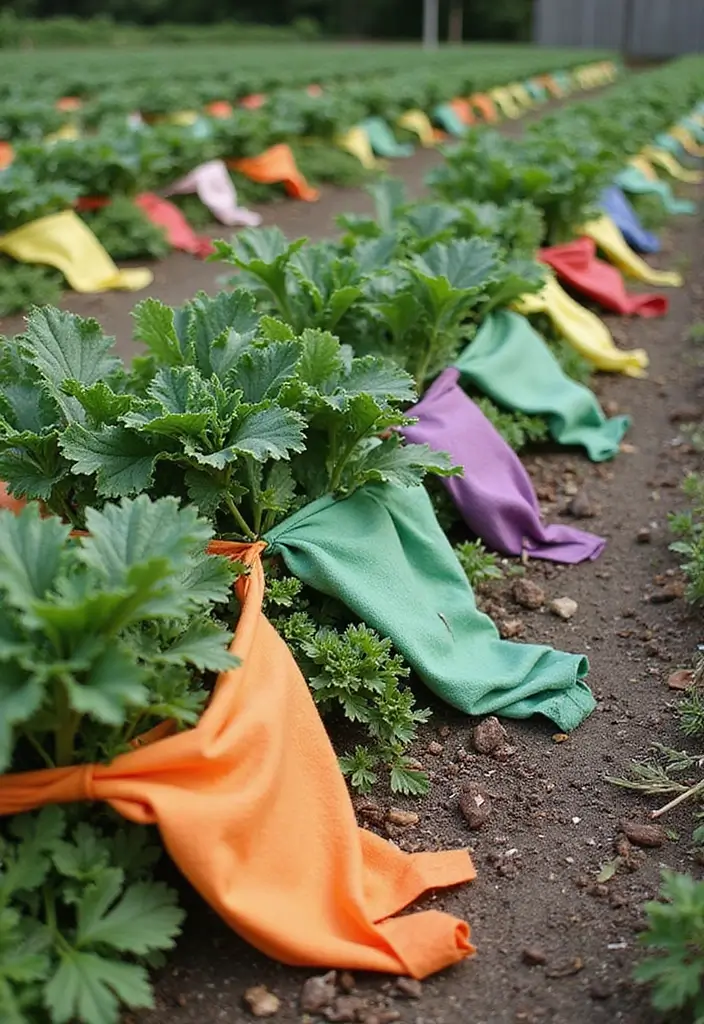
When it comes to supporting your plants as they grow, you don’t need fancy ties or expensive garden supplies. Old T-shirts can serve as an excellent and eco-friendly alternative!
Cut them into strips and use them to tie up plants to stakes or trellises. The fabric is gentle on stems and won’t damage your plants while providing the support they need. Plus, it’s a great way to reduce waste and repurpose what you already have!
– Use soft cotton T-shirts for flexibility and comfort.
– Choose bright colors to add a fun pop to your garden.
– Keep the ties loose to allow for growth.
This hack is a simple way to support your plants while showing some love to the environment.
10. Start a Garden Journal
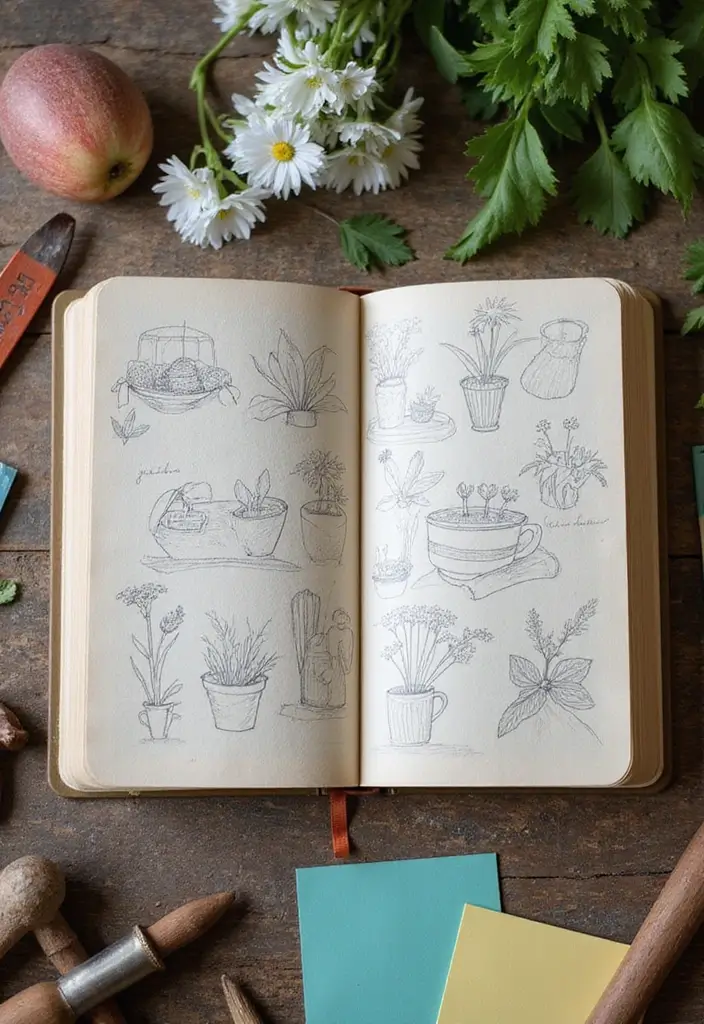
Keeping a garden journal is a fantastic way to track your gardening journey and reflect on what works best in your space. Document the growth of your plants, weather patterns, and any pests you encounter. This practice not only helps in planning for future seasons but also enhances your gardening skills.
Consider using a product like the Clever Fox Gardener’s Journal, which provides a guided notebook specifically designed for planting vegetables, flowers, and herbs. This 5-year garden log book is perfect for beginners and will keep all your notes and experiences organized.
You might also want to look into the Weatherproof Garden Journal. This planner includes adaptable forms that allow you to repeat successes and learn from mistakes, ensuring you have a comprehensive record of your garden’s progress throughout the year.
Don’t forget to include sketches, photos, and notes on what you’ve learned along the way. You don’t need to be an artist; the goal is simply to record your experiences! If you enjoy planning visually, the Gardening Sketchbook can help you map out your garden layout and create visual records of your plantings.
– Include planting dates, varieties, and notes on what flourished or faltered.
– Jot down new techniques you want to try next season.
– Review your journal at the end of the season to prepare for the next growing cycle.
With these tools at your disposal, you’ll cultivate not only your garden but also your gardening expertise!
A garden journal is your best friend in vegetable gardening! 📓✨ Capture your plant’s journey, weather quirks, and lessons learned – it’s the secret sauce for a bountiful harvest in seasons to come!
Conclusion
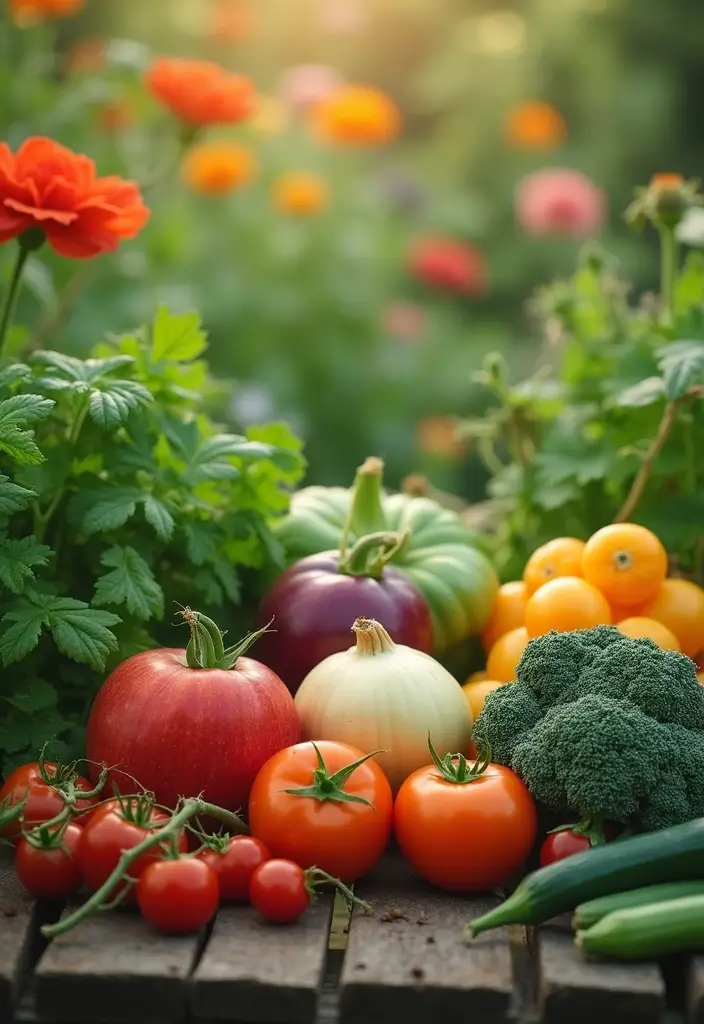
With these ten easy vegetable gardening hacks, you’re well on your way to creating a thriving garden filled with delicious homegrown veggies. Embrace these innovative methods to simplify your gardening tasks, reduce waste, and maximize your harvest.
Whether you’re a seasoned gardener or just starting, these tips will inspire you to get your hands dirty and enjoy the process of nurturing your plants. Remember, the joys of gardening come with patience and a dash of creativity!
Note: We aim to provide accurate product links, but some may occasionally expire or become unavailable. If this happens, please search directly on Amazon for the product or a suitable alternative.
This post contains Amazon affiliate links, meaning I may earn a small commission if you purchase through my links, at no extra cost to you.
Frequently Asked Questions
What are the benefits of using eggshells in vegetable gardening?
Eggshells are nature’s little secret in vegetable gardening! When you crush them and mix them into your soil, they provide a rich source of calcium, which is essential for preventing issues like blossom end rot in tomatoes. Plus, it’s a fantastic way to recycle and nourish your garden at the same time!
Next time you make breakfast, save those shells for a nutrient boost to your plants!
How does companion planting work for pest control?
Companion planting is like having plant buddies! Some plants, when grown together, can naturally repel pests or enhance each other’s growth. For instance, planting marigolds alongside your vegetables can deter harmful insects, while growing basil near tomatoes can improve their flavor. This method not only keeps your garden healthier but also supports biodiversity.
So, next time you plant, think about who your veggies would like to hang out with!
What are some easy DIY plant labels I can make?
Keeping track of your plants can be a fun project! You can create DIY plant labels from recycled materials like old wooden spoons, wine corks, or even plastic bottles. Simply cut them into strips, write the plant names on them, and stick them in the soil. It’s a budget-friendly and eco-conscious way to stay organized in your vegetable garden!
Your garden can be both beautiful and functional with these creative labels!
What’s a simple way to save water while gardening?
Every drop counts! A simple drip irrigation system can be a game-changer for your vegetable garden. By delivering water directly to the roots of your plants, you minimize evaporation and waste. You can easily set one up using materials like hoses and drippers, ensuring your plants stay hydrated without the hassle of frequent watering.
This not only saves you time but also helps your garden thrive with less water!
How can I use coffee grounds in my vegetable garden?
Coffee lovers, rejoice! Those used coffee grounds you toss out are a treasure for your plants. Coffee grounds are rich in nitrogen, which promotes healthy growth. You can sprinkle them directly into your soil, mix them into your compost, or even use them as a natural pest repellent against slugs and snails.
So, don’t throw those grounds away – give your garden a caffeine boost instead!

